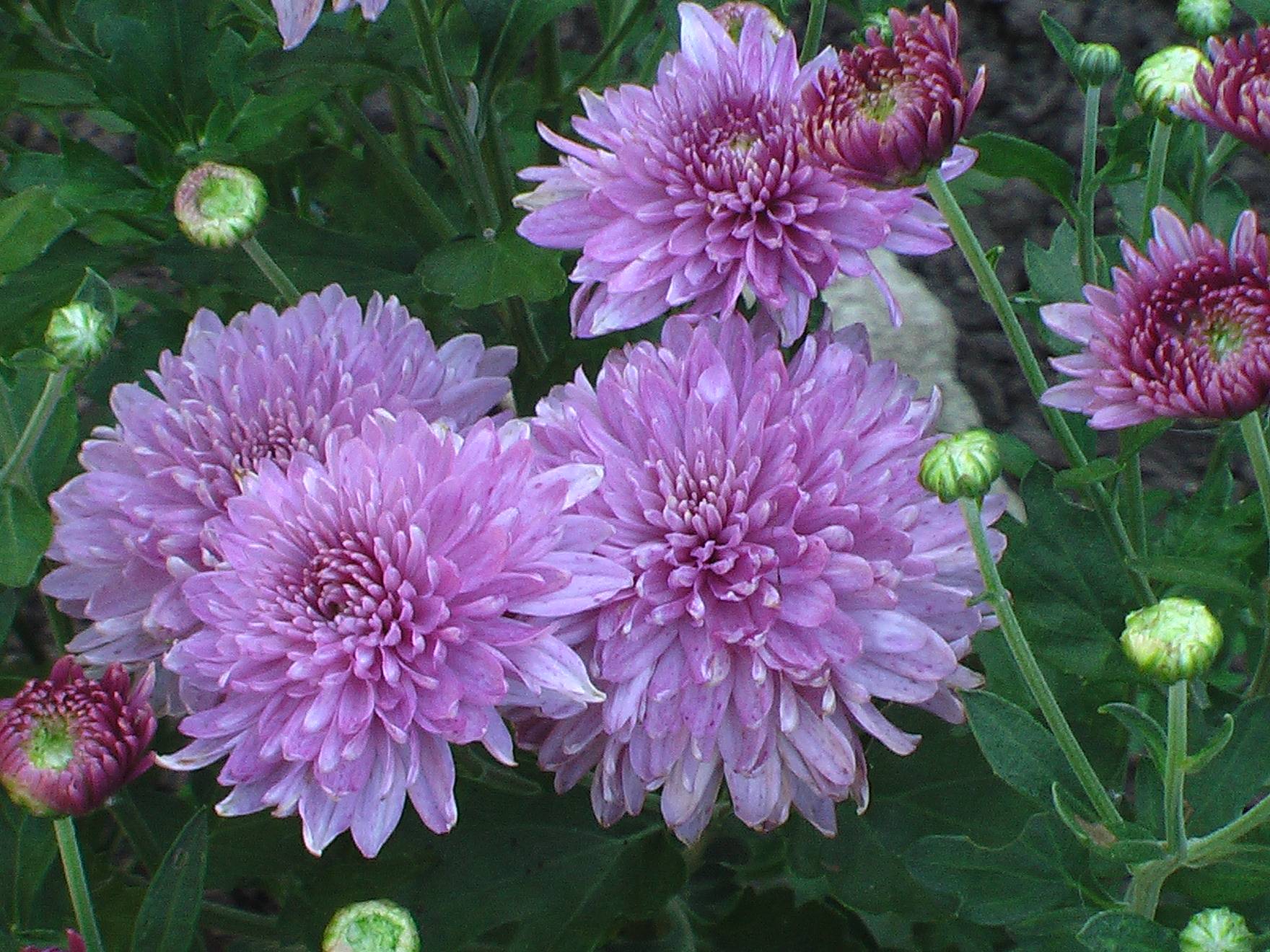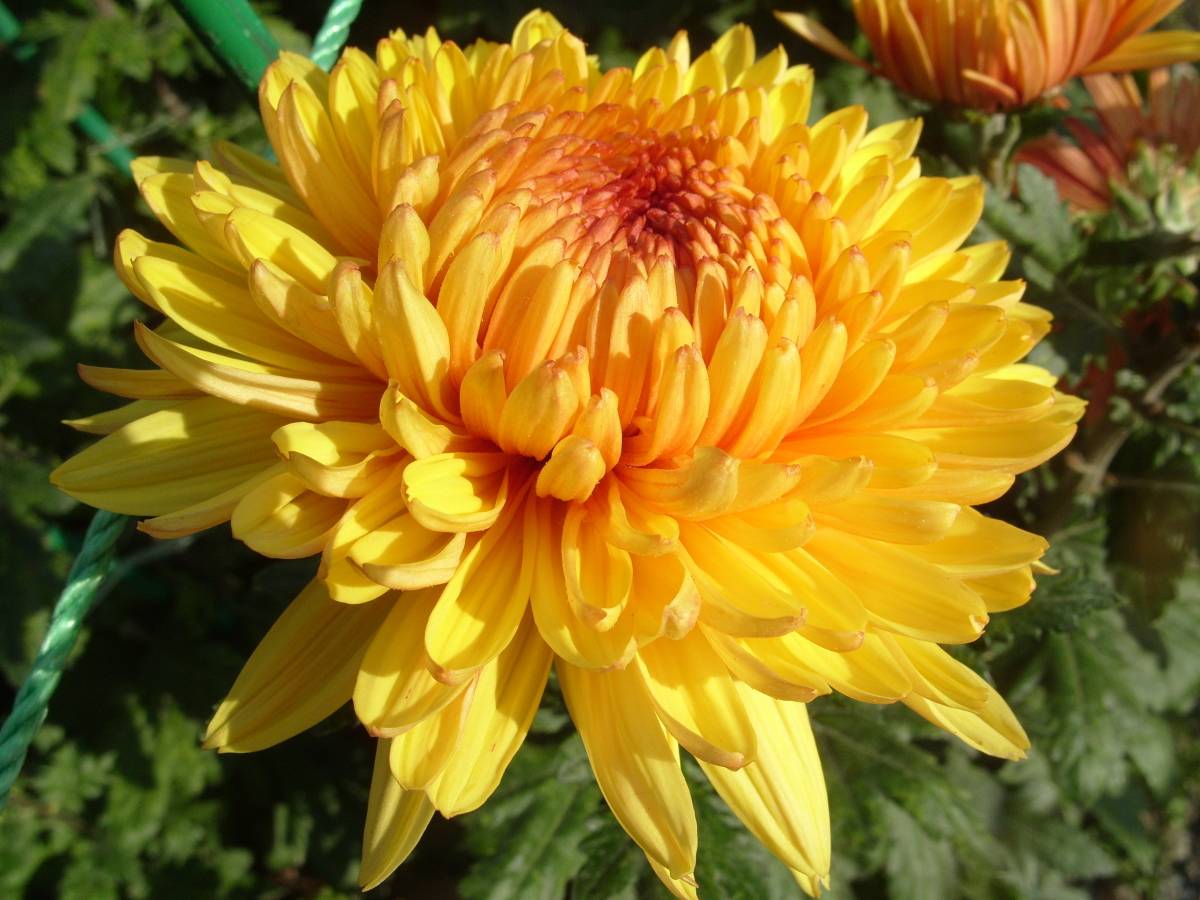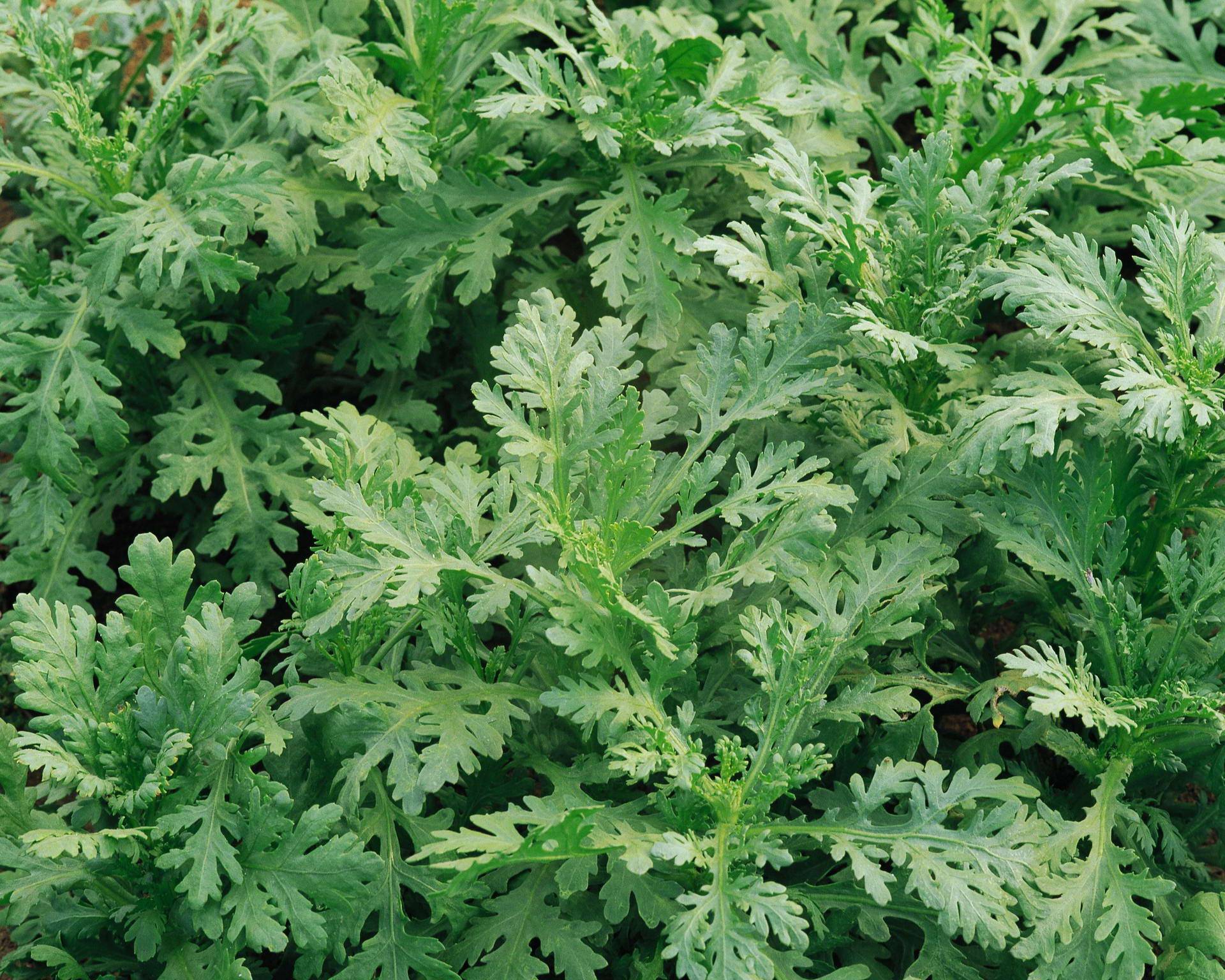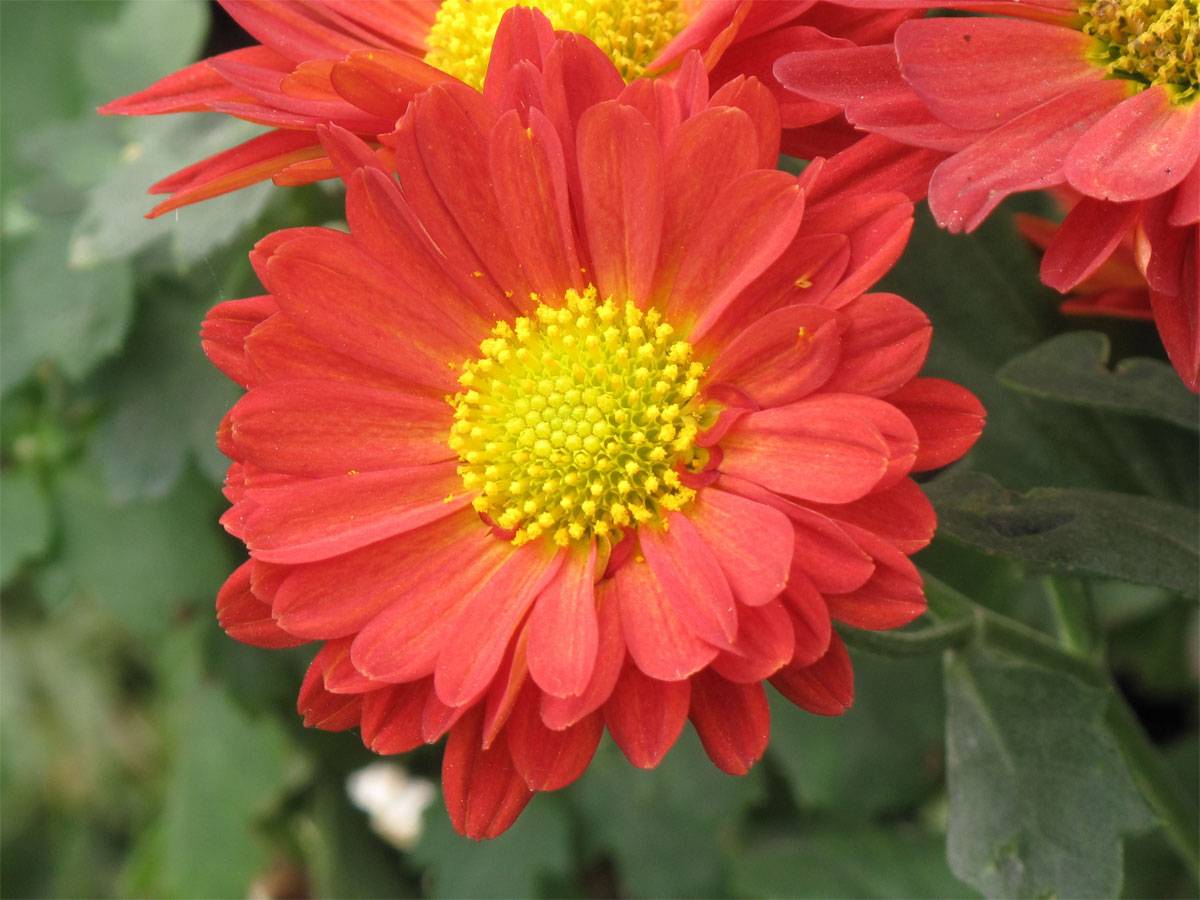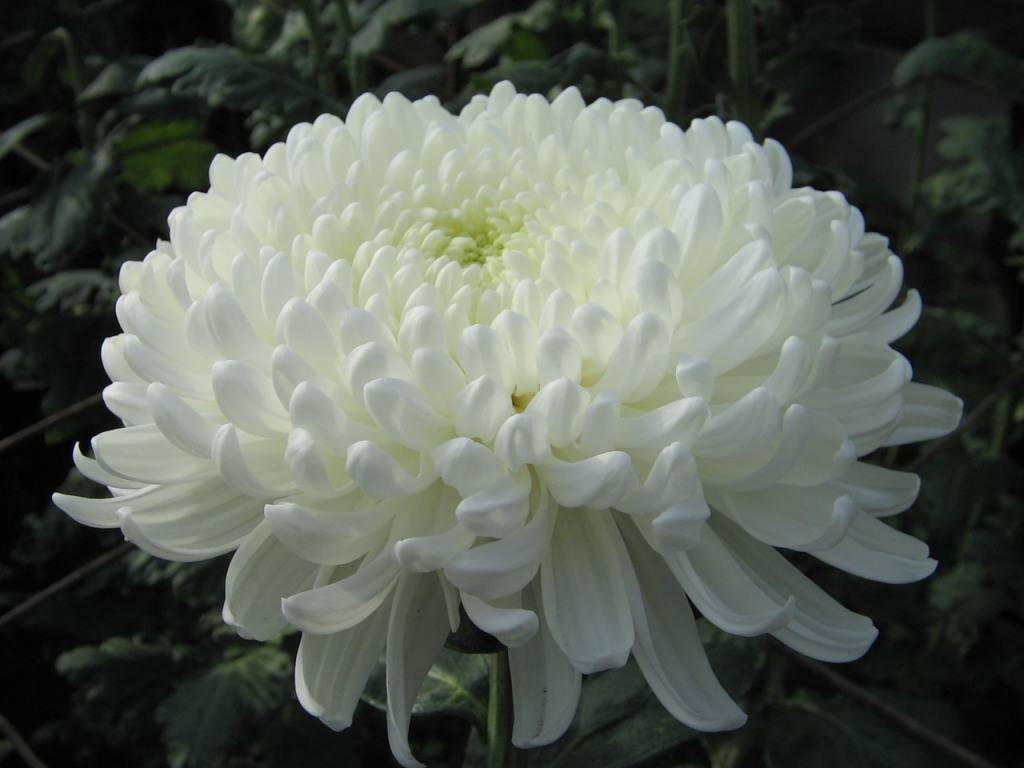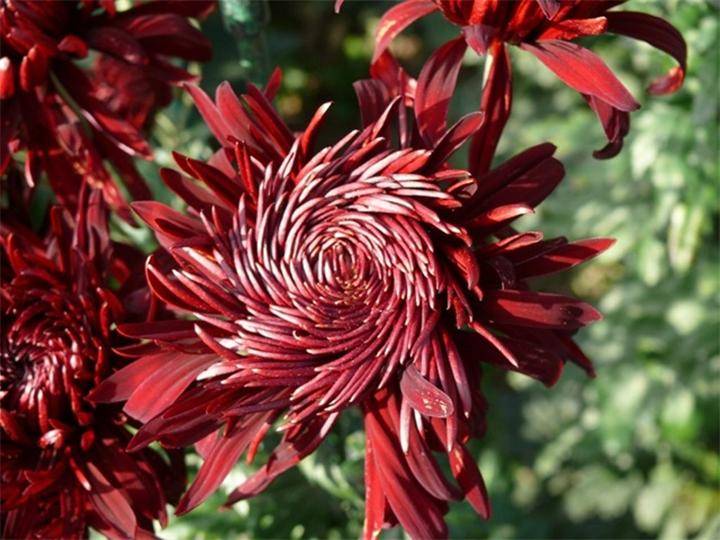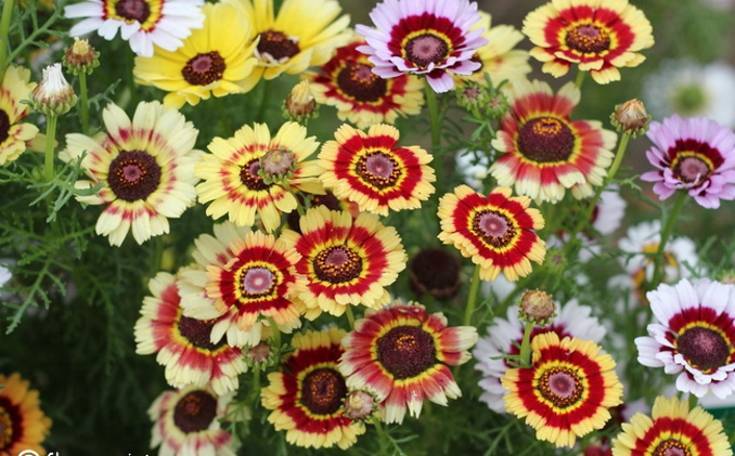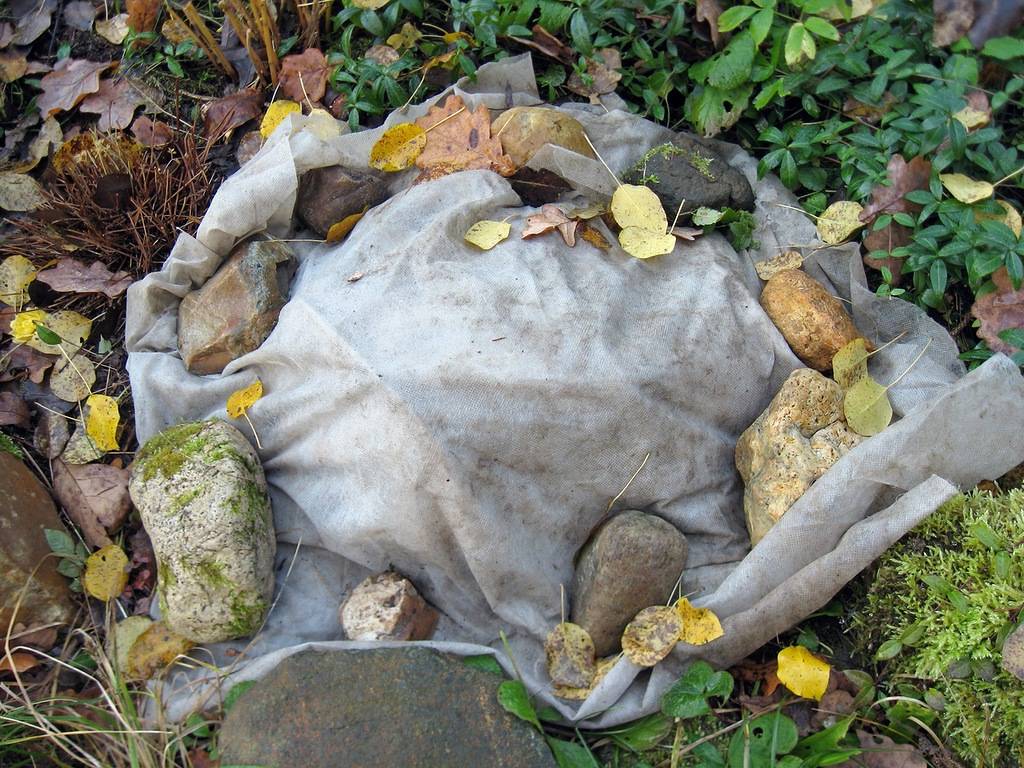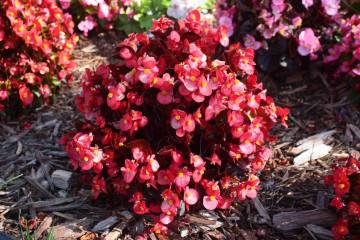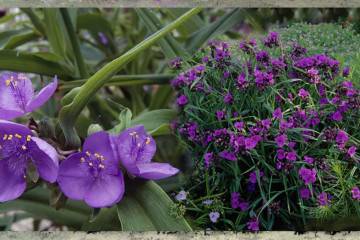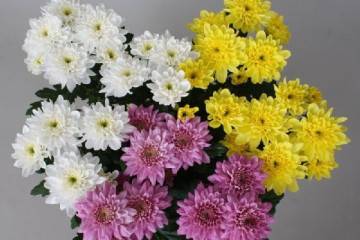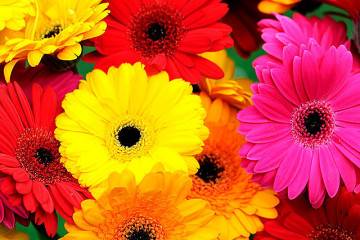Garden chrysanthemum - planting and growing
Content:
In gardens and dachas throughout Russia, you can find garden chrysanthemum, which is also called Chinese. Modern hybrids based on it are lush bushes of very tiny or very high heights, delighting with a magnificent palette of colors.
Garden chrysanthemum - what is this flower
The modern varieties are based on the species Chrysanthemum morifolium, belonging to the Aster family (Asteráceae). Traditionally, chrysanthemums bloom in the fall, among the last flowers of the year. The perennial is very resistant to low temperatures and does not wither even with the onset of frost.
For the first time, chrysanthemums are mentioned in the works of the Chinese philosopher of antiquity - Confucius (V-VI centuries BC). Then there were only yellow medium-sized flowers, almost indistinguishable from the wild ones. They served as the beginning for breeding in ancient China, which has reached 3000 varieties by now.
In the VI century. the flower was brought to Japan, where it became so popular that it is depicted on the country's national emblem. Dutch breeding began in 1689.
The perennial has a thick branched rhizome, from which stolon-like vegetative shoots extend. Stems are straight, 25 to 120 cm high, can branch, densely covered with foliage.
The leaf is green, stemmed, can reach 7-15 cm in length and 4-8 cm in width. The lower and upper leaves can vary greatly in size and shape. Some have short petioles and smooth edges, others have long petioles and are strongly dissected. The upper part may have pubescence, the lower part is lighter and heavily pubescent. When touched, a strong characteristic smell is heard.
The inflorescence is a basket. Each has up to 1000 tubular and reed flowers. Usually along the edge there are unisexual females with three fused petals, and in the middle - tubular bisexual. In semi-double and non-double varieties, the inflorescence consists of tubular bisexual flowers, and in double ones, almost all flowers are reed. There are all kinds of shades.
Plant varieties, popular winter-hardy varieties
Since in different countries the selection of varieties of chrysanthemums was carried out in different ways, there are several recognized classifications, according to which the derived names are distributed according to various characteristics. Chinese is considered the most complete and comprehensive.
Classifications by flower size and height
According to the Chinese classification Chang Shu-lin, small-flowered and large-flowered varieties are distinguished by flower size. The difference between them is not only in the small or large size of the corollas, but also in the chromosome set of each group, agricultural technology and other characteristics.
Since the shape of the inflorescences of modern varieties is very different, 25 classes are distinguished, among which 8 are small-flowered, and 17 are large-flowered.
Classification by the shape of inflorescences
Since the corolla can contain reed and tubular flowers, 4 types of inflorescences are distinguished:
- flat;
- anemone;
- tubular;
- spoon-shaped.
Separately, varieties are distinguished by the number of certain flowers in the corolla, the ratio of their geometric sizes, and a number of other features.
A colossal number of colors have been displayed, but they are all divided into 7 groups:
- white;
- yellow;
- cream;
- purple;
- red;
- bronze;
- green.
There are bicolor flowers, in which the shades of the inner and outer petals are taken into account. In the classification of Wang Mao-shen, it is customary to distinguish 9 types of inflorescences:
- Simple, semi-double. Their corollas are wide, and the ends of the petals are slightly curved.
- Terry. The symmetrical inflorescence has long outer corollas and short central corollas.
- Hemispherical and spherical. The flower is in the shape of a ball.
- Feathery, they are thick, thin and medium.
- Radiant, very similar to feather-like, but more radially symmetrical.
- Grabbing. The outer corollas look like thick tubes.
- Dragon claws. The outer flowers are in the form of feathers, the tips of which are dissected into 5-6 sectors.
- Hairy. They have pubescence on the underside of the corollas.
- Osmanthus - similar to osmanthus flowers.
Flowering classification
In Japan, where the flower is very much loved, the classification of the Imperial Park "Shinjuku" is widespread, believing that all chrysanthemums should be divided into cultivated varieties and wild ones. Among the cultural ones, there are food, used for salads, and decorative (inedible). Among the decorative ones in terms of ripening are distinguished:
- summer;
- autumn;
- winter.
The most numerous group is autumn, in which inflorescences can be small-flowered, large-flowered and medium.
Perennials and annuals
Among the annual varieties, which differ in their medium-sized corolla sizes (up to 4 cm in diameter), 4 groups are distinguished:
- multi-stemmed;
- sowing;
- crowned;
- keeled.
The flowering period for annuals is very long: it begins at the end of June and lasts until November, ending with the establishment of stable frosty weather. They can be very different in height - from 25 to 70 cm.
Shrub perennials are significantly larger than annuals and can grow up to 1.5 m in height. Cultivated outdoors and on windowsills. Large-flowered varieties are cultivated in greenhouses for high quality cut. By the timing of flowering, it is customary to distinguish early (they bloom in summer), medium and late varieties.
Perennial chrysanthemums - planting and care in the open field
In general, even with not the most careful care, the plant can grow in one place for many years and bloom every year. But the quality and quantity of flowers will gradually deteriorate.
To obtain a consistently attractive result, you must follow the rules for how to grow chrysanthemums in the garden, greenhouse or at home.
Choosing a location for a chrysanthemum in the garden
The plant is demanding on lighting. With a lack of sunlight, the quality of flowering suffers.
In the shade without the sun, the corollas become smaller, the stems are extended in height, which later turns the bush into a creeping and unattractive one. To maintain a neat crown, the landing site should be protected from strong winds.
How to prepare the soil and flower for planting
Sandy loam and loamy drained soils, carefully dug up, enriched with humus, are optimal for planting perennial chrysanthemums.
The desired acid-base reaction is weakly acidic, therefore peat is very well suited for mulching plantings. Heavy clay soil is not suitable for growing a flower.
Features of planting chrysanthemums before winter
In autumn, in the first half of September, pre-winter planting of bushes is carried out. The best material is flowers in closed-root containers. Why this is important - because they do not need pre-planting preparation.
If the roots are bare, then a day before planting them in open ground, it is required to soak the roots in Kornevin's solution.
Consider how to plant chrysanthemums, step by step:
- The holes are dug 40 cm deep, leaving the same distance or more between them (for tall varieties).
- A 5 cm layer of coarse sand or screenings is poured onto the bottom of the holes.
- The soil for filling the roots is mixed with humus.
- Planting is carried out without burying the stems.
- For tall bushes, a support or a garter is organized.
- Water and mulch abundantly around the soil.
Caring for chrysanthemums in the garden
Drought-resistant and cold-resistant flowers are considered the least demanding to care for. The exception is the newest large-flowered hybrids, which require more thorough protection from pests and frequent feeding.
Watering rules and humidity
A perennial is sensitive to a lack of moisture, although it can survive for a long time in drought conditions. With insufficient watering, the flowers become smaller and their number decreases. If moisture is severely lacking, the juicy stems become woody. With excess watering, the roots can rot, especially in clay soil.
It is necessary to maintain the middle, watering is carried out when the topsoil dries out (5-7 cm). In the heat, you usually have to do this more often, and rarely in the cold.
Top dressing and soil quality
The lack of minerals leads to the loss of the beauty of the flowers, but with timely feeding, you can extend the flowering period and increase the number of buds.
Nitrogen fertilizers are applied immediately after planting. In July, potassium-phosphorus feeding is required. Depending on the size of the variety and the quality of the soil, 3-7 dressings will be required per season. Average fertilizer consumption per 1 m² of plantings:
- nitrogen - 10-15 g;
- phosphoric - 15-20 g;
- potash - 10-15 g.
Pruning and replanting
In order to force the shoots to branch (not for all varieties), they are cut off when they reach a height of 10-20 cm. Cut off the tops of 5-7 cm long, which can be rooted. The rest of the stem should have 3-5 pairs of leaves.
Perennial chrysanthemums are transplanted in the spring (in May) or in the fall (in September). They do this to form flower beds and to reproduce (rejuvenate) old bushes by dividing them.
Wintering a flower
In the southern regions, where freezing temperatures do not fall below -20 ° C, perennial chrysanthemums do not need careful preparation for winter. In the northern parts of the country, a number of activities will need to be carried out:
- Spud the bushes.
- Place weights around (bricks, pieces of boards, etc.).
- At the end of October, trim the stems to a height of 10 cm.
- After establishing a stable frosty temperature, cover the plantings with agricultural canvas, crushing the material with weighting agents.
In September, the last feeding is carried out, which may contain phosphorus and potassium, but not nitrogen.
Features of flowering plants
Different varieties may differ from each other in terms of the onset of flowering and characteristics of corollas, but in general they obey general laws.
A period of activity and rest
If the bush has begun to bloom (this can happen from the end of June to November), then its buds bloom sequentially from the crown, gradually covering the entire bush. It can last 2-3 weeks or several months.
Types and shape of flowers
Since chrysanthemums can be dwarf, medium and tall, the largest of them requires support. This can be a trellis or special wire devices. Some varieties prone to lodging are tied up in spring.
By the form of flowering, two large groups can be distinguished: multi-flowered and cut-off, expelling one stem, crowned with a huge (up to 20 cm in diameter) basket.
Post-flowering care
As the corollas wilt, they must be carefully cut off. Only the flowers themselves are removed. The stems are cut before the onset of frost.
This is very important, since the green ground part serves as a source of nutrients for the rhizomes that lay the vegetative buds of the next year in the fall.
Flower reproduction methods
The largest bushes can be divided into several parts, getting 2-3 full-fledged plants at once, completely ready for immediate planting. In addition, propagation by cuttings is used, and as the rarest (due to its laboriousness) method, seed sowing.
Propagation by cuttings
To obtain cuttings, you can use a bouquet, as well as adult bushes. If a cut is used, then the flower is removed from it, and the shoot is placed in water. After 2-3 weeks, with success, roots should appear. After that, they can be immediately planted in open ground.
Cutting cuttings from a bush is done in May. It is very important to use only healthy plants without signs of disease. The cut shoots are dropped to a depth of 5 cm on a loose bed, covered with a cut plastic bottle on top. After 2-3 weeks, new leaves should appear on the rooted cuttings.
Propagation using seeds
Sowing with seeds is carried out in February for seedlings. The germination period depends on the variety, ranging from 2 to 4-5 weeks. Seedlings are grown until May, and then immediately planted in a flower bed. Some undersized varieties can be grown in pots on windowsills, knowing how to plant the chrysanthemum and get it to bloom.
It is difficult to collect seeds from bushes already growing in the garden in central Russia. Usually they do not have time to ripen before the onset of frost. But you can cut the shoots with flowers almost near the ground, put them in a vase of water and wait for the seeds to ripen at home.
Growing problems, diseases and pests
Chrysanthemum diseases:
- Viral: dwarfism, mosaicism, greening of inflorescences and others. They cannot be treated, the affected plants must be burned.
- Powdery mildew. It occurs when there is a lack of potassium and phosphorus in the soil and an excess of nitrogen, as well as in thickened plantings in damp and cool weather. Proper farming practices will prevent the appearance of fungus. The affected bushes are treated with copper sulfate, Fundazol.
- Gray rot. First, a gray bloom appears on the leaves and stems, and then the plant turns brown. They are treated with broad-spectrum fungicides.
- Septoria. Black spots cover the green parts of the plant from bottom to top. The disease occurs in damp and poorly lit areas, so you should reduce watering and improve lighting.
- Rust. The leaves are covered with yellowish-green spots, gradually turning brown. In warm and humid weather, the disease progresses rapidly. Treatment with Topaz, as well as Bordeaux liquid will help.
Pests:
- Nematode. A difficult-to-kill pest that affects all parts of the plant, including the roots. Only thorough course treatments with specialized drugs (Mercaptophos, Phosphamide) help.
- Spider mite. Due to the fact that insects suck out the sap of the plant, it quickly begins to dry out. Treatment with acaricides is carried out against the pest (Aktelik, Fitoverm).
- Aphid. It happens of different types, leads to the death of bushes and their defeat by viral diseases, as it is their carrier.Against it, you will need to treat the planting with a broad-spectrum insecticide several times, for example, Aktara.
Perennial garden chrysanthemum is a luxurious decoration of the garden in the season when most of the flowers have already faded. Year after year, with proper care, her bushes will only gain splendor and beauty, delighting with their attractive appearance until snow falls.
